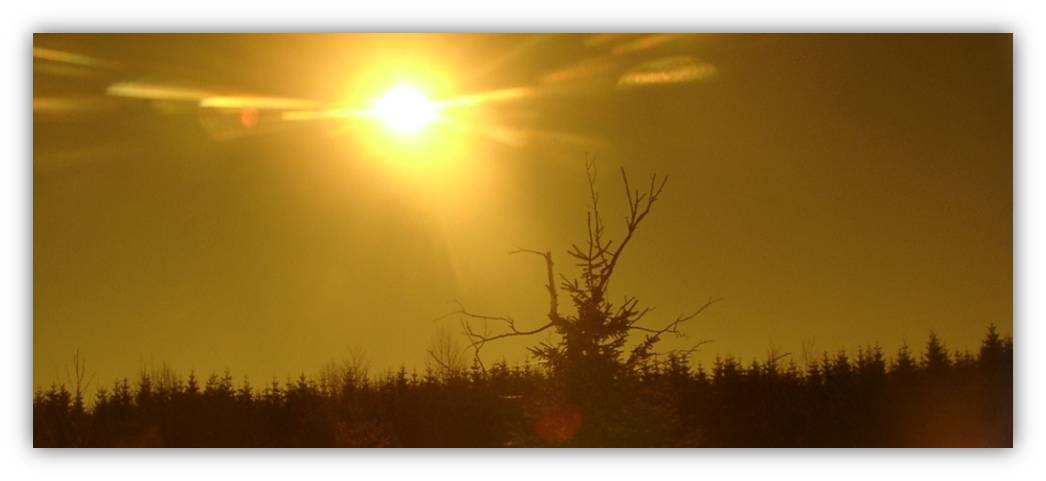
The solar irradiation is decisive for the cover and composition of the spring's vegetation. It also influences the temperature of the spring water and thus all organisms living in it. The intensity of light, i.e. the amount of light received by the spring areal, depends among others on the relief and the plant cover. Sunny slopes and shady slopes receive a different amount of light, depending on the apex of the sun. The altitude of the site also influences the amount of direct irradiation to reach the spring.
Under the cover of deciduous trees, the relative solar irradiation which reaches the spring is about 2 to 5 percent of the iridation at the site in summer and above 40 percent in winter. Under the cover of coniferous trees, the relative irradiation is all year round a constant 7 percent. The shading, i.e. the reduction of available light, is further intensified if tall forb communities (tall herbaceous vegetation) are developed around the spring, which are filtering the light in addition to the tree cover.
Springs in the open landscape are lacking the shading by a forest canopy. An increase of water temperatures caused by irradiation may be diminished by a tall forb community. An intensive use of open lands (by grazing or cultivation), which removes the tall herbaceous vegetation, leads to an increase of temperatures, which may in turn lead to a loss of spring organisms.


